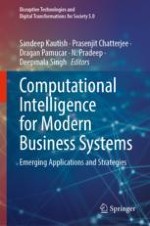This book covers the applications of computational intelligence techniques in business systems and advocates how these techniques are useful in modern business operations. The book redefines the computational intelligence foundations, the three pillars - neural networks, evolutionary computation, and fuzzy systems. It also discusses emerging areas such as swarm intelligence, artificial immune systems (AIS), support vector machines, rough sets, and chaotic systems. The other areas have also been demystified in the book to strengthen the range of computational intelligence techniques such as expert systems, knowledge-based systems, and genetic algorithms. Therefore, this book will redefine the role of computational intelligence techniques in modern business system operations such as marketing, finance & accounts, operations, personnel management, supply chain management, and logistics. Besides, this book guides the readers through using them to model, discover, and interpret new patterns that cannot be found through statistical methods alone in various business system operations. This book reveals how computational intelligence can inform the design and integration of services, architecture, brand identity, and product portfolio across the entire enterprise. The book will provide insights into research gaps, open challenges, and unsolved computational intelligence problems. The book will act as a premier reference and instant material for all the users who are contributing/practicing the adaptation of computational intelligence modern techniques in business systems.
